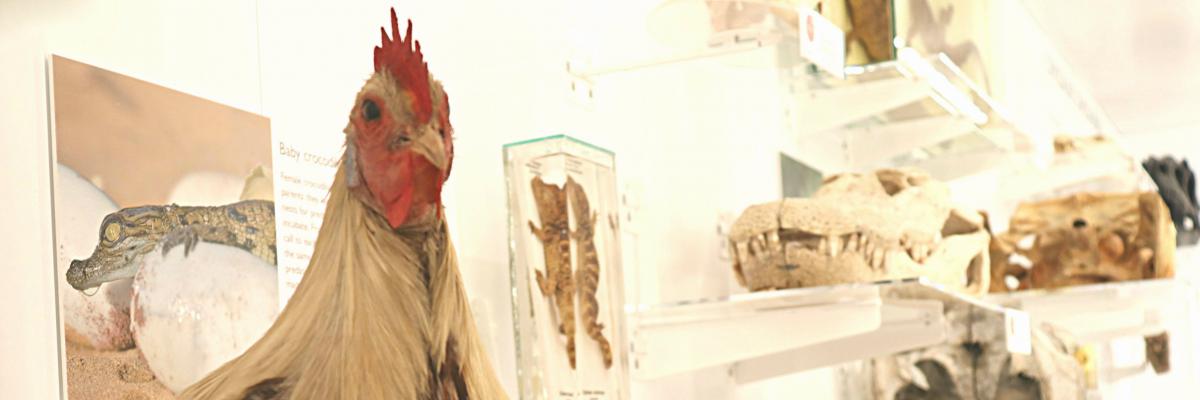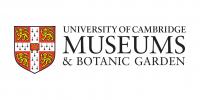
Submitted by Tricia Harnett on Mon, 29/07/2019 - 14:08
A major new permanent display of reptiles including birds has opened at the University Museum of Zoology. This display is the largest addition to the Museum’s galleries since it reopened in 2018 - after a five year re-development supported by The National Lottery Heritage Fund.
Included among the displays is a reproduction of the fossil vertebra of the largest known snake to have ever lived – Titanoboa – which was discovered in 2009 by the Museum’s Curator of Vertebrate Palaeontology, Dr Jason Head. The (now extinct) snake grew to 13-15 metres long, and lived in South America 60 million years ago.
Visitors may also be surprised to find a chicken amongst the reptiles in the new displays. The Museum is highlighting that birds are a specialised group of reptiles, having evolved from small Velociraptor-like dinosaurs around 150 million years ago. The idea that birds are living dinosaurs has been proven in recent decades following the discovery of countless feathered dinosaur fossils. Crocodiles are also more closely related to birds than they are to snakes, lizards and turtles.
Professor Paul Brakefield, Director of the Museum of Zoology said; ‘Museums still tend to separate birds from reptiles in their galleries. We are aiming to create a trend for making the relationship between birds and other reptiles much clearer. This new case, which spans the entire width of the Museum, will be a significant new attraction for our visitors.’
The huge case exhibits a dramatic array of snakes, lizards, crocodiles, dinosaurs and the extinct flying and swimming reptiles that lived alongside them, as well as explaining where birds fit in with these groups. Some of the stories featured focus on the conservation of reptiles, which can be complicated by human attitudes towards them. Specimens of two of the world’s rarest reptiles are included – the gharial (a long-snouted fish-eating relative of crocodiles from India, Nepal and Bangladesh), and the Siamese crocodile from Southeast Asia. The global populations of both species number in the low hundreds.
Another display explores the diversity of turtles, from the extinct horned giant tortoise Ninjemys (which was named after the Teenage Mutant Ninja Turtles) to tiny terrapins.
There is also a new exhibit showcasing the perching birds, which is the group containing over half of all living bird species. Among them are the familiar finches, crows, tits and thrushes, as well as the spectacular birds-of-paradise, which are famous for performing elaborate dances involving their extraordinary plumages in order to attract mates, as can be seen here. https://www.youtube.com/watch?v=nWfyw51DQfU
The new display also includes a rare pair of extinct taxidermy huias. This species of bird was last seen in its native New Zealand in 1907, having been driven to extinction by deforestation and over-collecting (for museums and for the use of its feathers in ladies’ hats). Huias are unusual in that the males and females had differently shaped beaks for feeding in different ways: the female had a remarkable thin down-curved beak for picking insect grubs out of crevices; while the male had a sturdy bill for excavating food from behind bark.
The University Museum of Zoology, Cambridge is one of the largest and most important natural history collections in the UK, with an extraordinarily rich history dating back to 1814. In 2018 the Museum reopened after a five-year, £4.1million redevelopment – including nearly £2 million of funding raised by National Lottery players – to reveal thousands of incredible specimens from across the animal kingdom, including whales, elephants, a giraffe, giant ground sloth, insects, corals as well as items collected by Charles Darwin.
The new birds and reptiles displays are now open at the University Museum of Zoology. Free entry.





